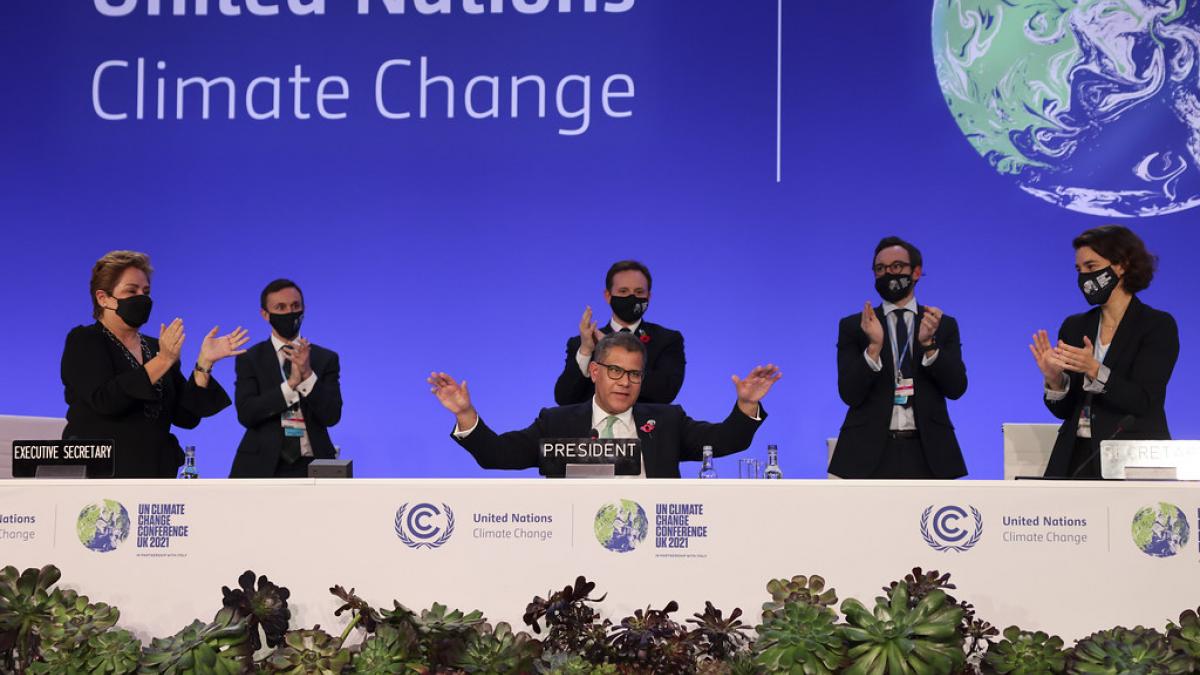 David Thomson, Head of Policy and Research at the IFoA, rounds up some of the key takeaways from the COP26 UN Climate Change Conference and what it might mean for the work of the IFoA and the actuarial profession.
David Thomson, Head of Policy and Research at the IFoA, rounds up some of the key takeaways from the COP26 UN Climate Change Conference and what it might mean for the work of the IFoA and the actuarial profession.
So after two weeks of intense activity in Glasgow the COP26 climate change conference has concluded. It was well summarised by the New York Times headline of “Real gains on climate or just ‘blah blah blah’”? The early stages, including the key Finance day, were covered in a blog by Caroline Winchester last week. Verdicts on the success – or otherwise - of the conference itself have been well covered in the media and there are useful BBC summaries of what was agreed and what it means for the average person. However, after some time spent at the conference, I thought it might be worth reflecting, out of the bubble of Glasgow’s SEC, on five personal takeaways from the event.
First – to get an overall perspective about whether it can be judged a success, it is worthwhile looking at the data used by the influential Climate Action Tracker, which estimates the promises garnered at COP26 amounted to pulling back to approximately 2.4% global warming by the end of the decade (with the big target 1.5%). This points to some successes but to achieve further progress it will be too late to wait another five years for a major COP – I suspect we are likely to see the next COP in Egypt next year requiring a further racketing down of this 2.4% figure [given that scientific consensus estimate that 2% would be catastrophic
Secondly, a bit of a ‘yikes’ moment from an excellent Chatham House event hosted at COP26, where they discussed their 2021 assessment of climate risk. This work shows clearly that climate change will be a key driver of a series of potential systemic risks arising from the consequence of direct impacts creating a series of cascading risks i.e. disease, water scarcity, crop failure, loss in infrastructure, livelihoods and ecosystems and so forth. The report states worryingly “due to their complex nature it is not possible to quantify the probability or severity of system risks”.
Thirdly, some interesting public polling shows that whilst there is a clear public awareness of the challenge and acceptance we need to collectively do something about it – radical change will need to be carefully combined with public engagement. The think-tank Onward set this out mixed news in a new paper that stated: “there is no big divide in our politics on the principle of decarbonisation – four-in-five of us think putting off action makes things worse, including across all ages/classes/politics. But in principle support isn’t the same thing as actual support. The rubber hits the road on specific policies that require £ – people are all for improving home insulation, just not for paying for it. Poorer groups unsurprisingly aren’t massively up for costly change”.
To achieve the big push to a 1.5% world the hard yards will need to be made in the next five to ten years and that will cost a lot up front (both in terms of finance and political capital deployed) even if there are large technology gains.
Fourthly, arguably the most important feature of COP26, was the low key presence of China – the country with the largest carbon footprint, with 31% of all CO2 emissions worldwide. Of course, they were there but President Xi Jinping stayed away. The fact is that China has to be part of the solution given its size and increasing economic influence in the decades leading up to 2050. That is why the relatively low key announcement of a China-US ‘conversation’ on climate change might be the most significant outcome from COP26 in the long term. Is it possible that the world’s two power brokers are developing a bilateral channel to forge a way forward over and above the complex multi-national process of UN-led conferences and charters? Understanding China’s pathway to carbon neutrality whilst maintaining economic and political momentum is crucial.
Finally, there was much discussion about carbon finance throughout the conference, but despite the announcements, there is still a lot of challenges about how to measure the standards for compliance and adherence to sustainable financing commitments, and whether they go far enough. Do companies feel they are on a level playing field and does the public feel they know how to navigate the so-called challenge of green-washing? Two big challenges despite progress made. This is likely to be a key debate for all of us in the coming year.
For more information about what the profession is doing on sustainability have a look at our Pathways to Sustainability campaign.